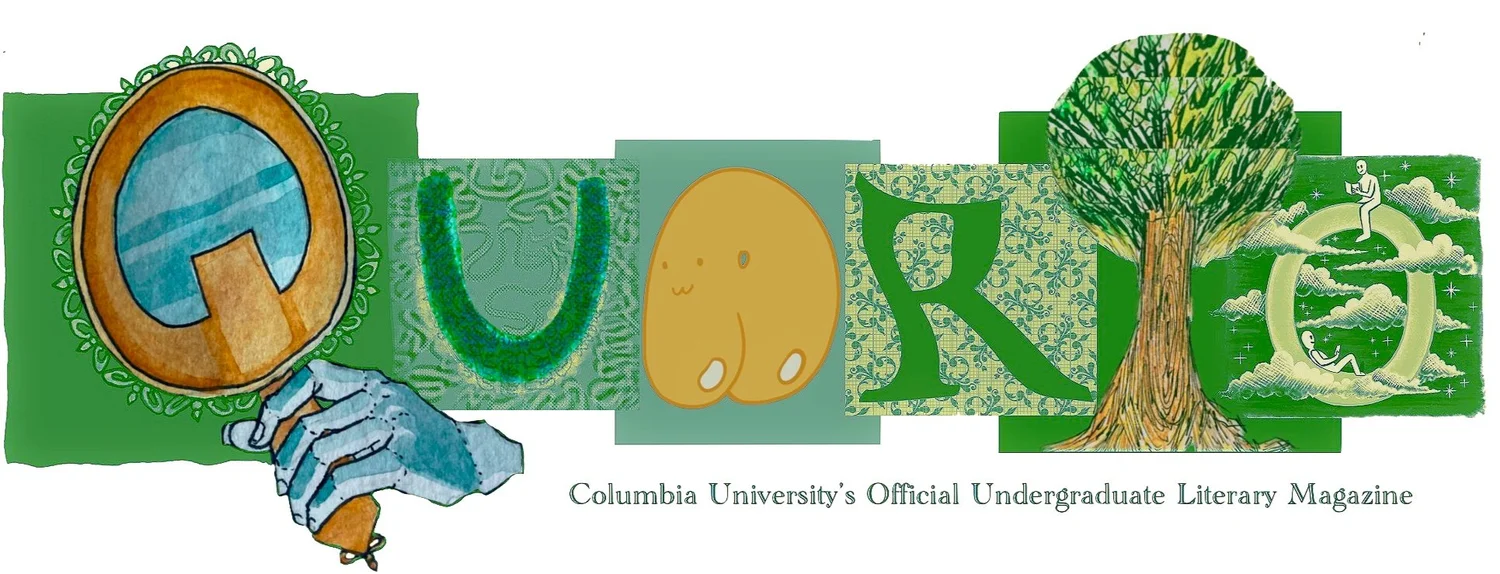When I walk into the kitchen for breakfast, the frogs are having sex. The throaty, murmured gurgling feels as if it is leeching out from between the gaps in the kitchen tile, intermingled in the hiss of eggs I am frying on the stovetop. The stubby claws of the smaller one are wrapped voraciously around the bloated haunches of his counterpart. They float, suspended, in murky green isolation. I eat my eggs.
We get the frogs from my sister’s school, a parting gift after they have finished growing them in class, an opportunity for kids to take the science home. The frogs are small and dark and slippery, and we put them in a tank where they frolic with our pre-existing guppies. The frogs expand in what feels like only weeks, layers of mossy skin feathering off in violent strips. They are enormous. One day, we come down for breakfast and there are no longer guppies.
I name the one frog Coldplay, because when I watch them that first week and I see the larger one float down seamlessly, from the top where she has just drawn a breath, I am reminded of the lazy, controlled descent of parachutes, webbed folds of skin gracefully catching folds of effervescence. “Parachutes” is the band Coldplay’s first album. My father and sister do not seem delighted by the many layers of my genius. The other frog is named Fred.
“I think our frogs are gay,” my dad says one morning. Staccato croaks punctuate his point. The frogs have sex every morning and there are never any new frogs. They are suspended in an isolated world of only each other, one clasped tightly around the other, unaware of our eyes watching them every breakfast. At school, I tell my friends that my frogs are gay. We buy long stalks of aquatic plant to add nuance to their tiny world. We need to buy a bigger tank. “You can’t get one with a filter,” my dad says. He has read that it disturbs their sense of echolocation, blinds the reverberations of their sounds and movements, isolates them in a droning soundscape. Instead, a small layer of green film builds up and never leaves. When I butter my toast the next morning, I hear the croaking and know that they are finding themselves.
It has been two years, and every other kid’s frogs have died. Ours balloon with life, expanding, engorging. They are supposed to be African dwarf frogs, we say, and look up a picture, but can not reconcile the small, dark shapes we find online with the monstrous corpulence that float before us. “Often confused with African clawed frog,” my dad reads. African clawed frogs are illegal in eleven states. They can live to be thirty years old. They are named for their talons that rip and tear, our guppies, their aquatic plants, Fred’s claws curled in Coldplay’s back.
We begin to notice tiny dots that coagulate across the glass of the tank, even when it is clean. The dots unfurl to reveal tiny dark and slippery creatures that quiver confusedly in their murky landscape. They are the approximate shape of food pellets, and we do not fish them out. I come into the kitchen at night to get a glass of water and I find my father crouched, in the shadow of one fluorescent lightbulb, in front of the tank. He drops each food pellet so that it floats down slowly, right in front of their beaked faces, in between the ridges of their eyes, so that they cannot miss it. Sometimes it will float down near them but they will turn away, unseeing, lunging instead for a little piece of inedible matter, or perhaps nothingness. It is late. My father continues to drop pellets until he sees that each one catches three.
Franziska Nace is a first-year Columbia College student planning to major in English. She is from Pittsburgh, Pennsylvania.

